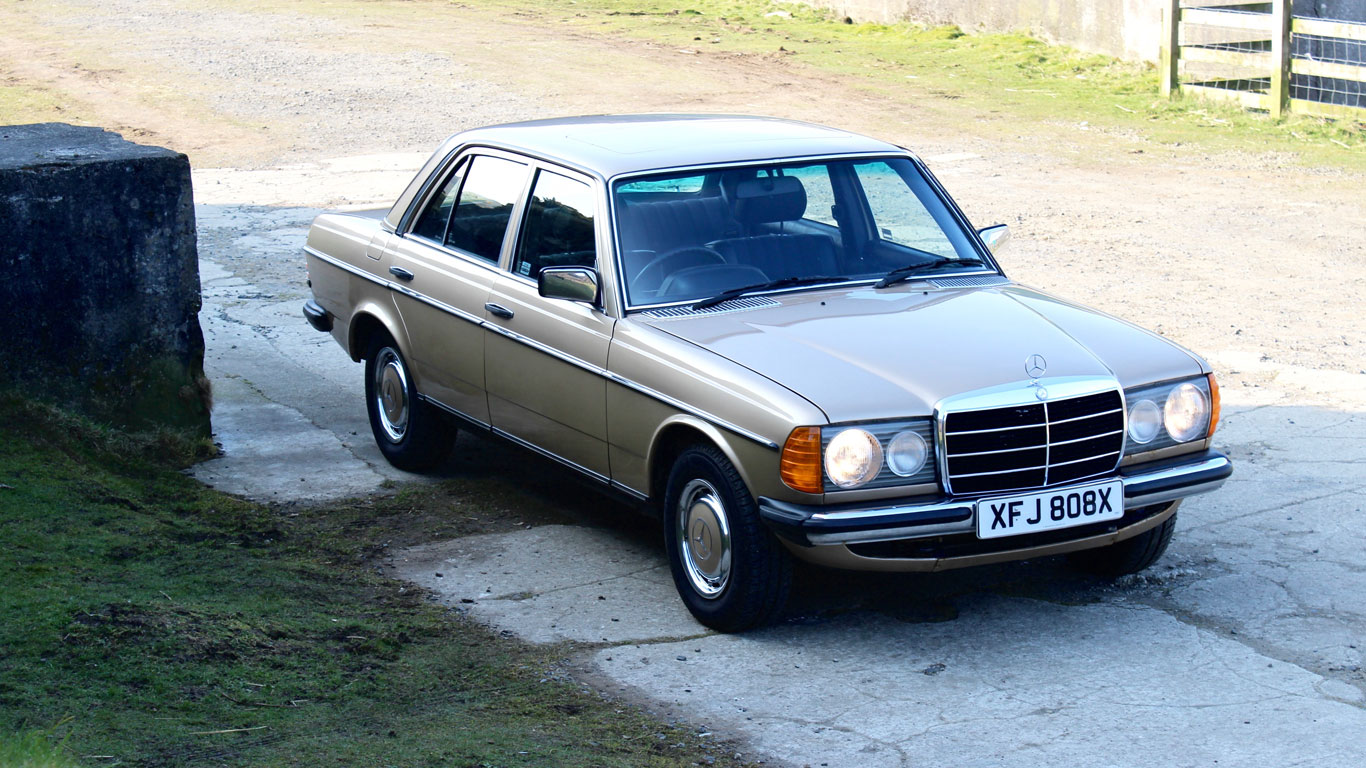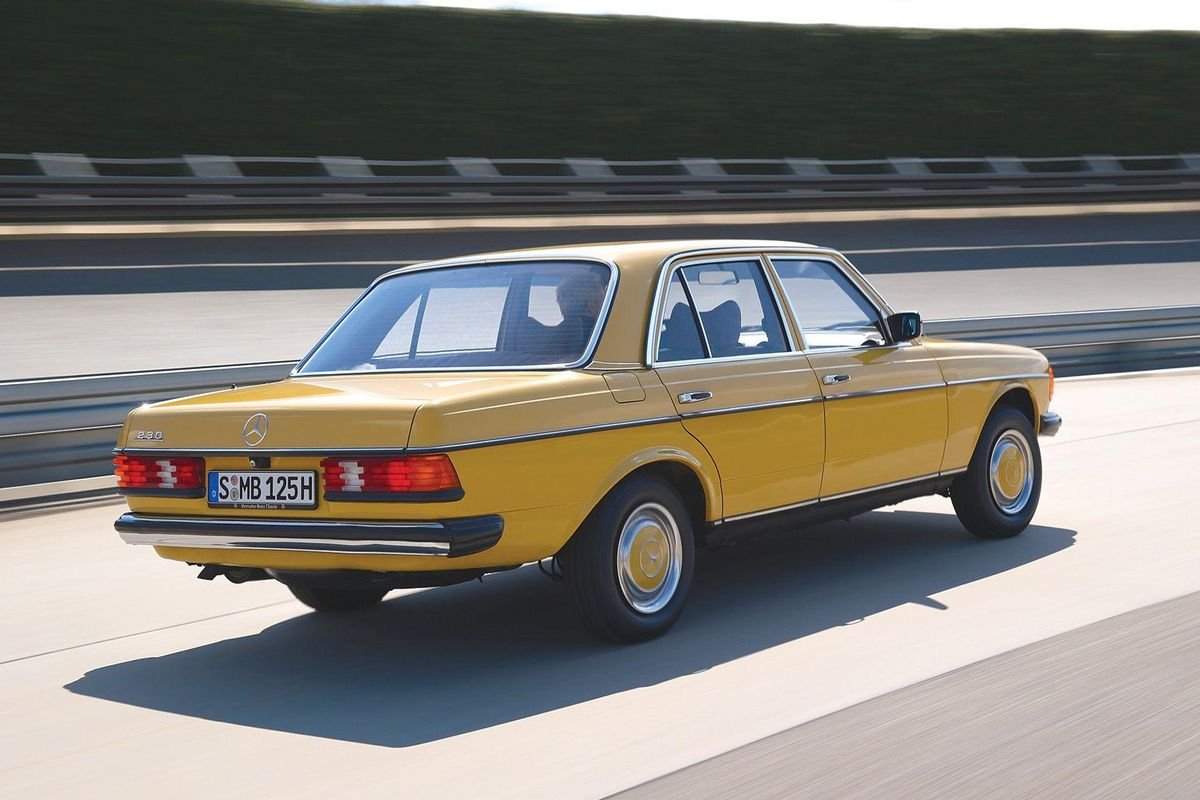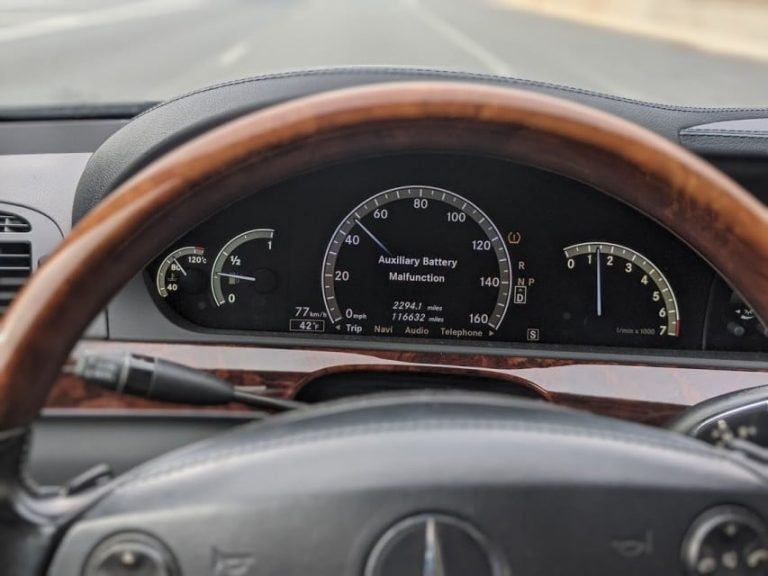Common Problems With Mercedes W123: Troubleshooting Tips to Get You Back on the Road
Common problems with mercedes w123 include faulty electrical systems and rust issues. This iconic model often experiences electrical malfunctions and is prone to rust, causing potential safety hazards and high maintenance costs.
The mercedes w123 is a beloved classic car known for its durability and timeless design. However, like any vehicle, it is not immune to common issues that drivers may encounter over time. Some of the most common problems with the w123 include faulty electrical systems and rust issues.
These electrical malfunctions can range from minor annoyances, such as malfunctioning warning lights, to more serious issues like power window failures or faulty ignition switches. Rust is also a common problem with the w123 due to its age and susceptibility to corrosion. This can lead to structural integrity issues and expensive repairs. It is important for w123 owners to be aware of these common problems and address them promptly to ensure the longevity and safety of their vehicle.

Credit: www.retromotor.co.uk
Engine Issues
Troubleshooting Issues With Engine Performance
Is your mercedes w123 experiencing engine troubles? If so, you’re not alone. Engine issues can be frustrating, but they are not uncommon with this particular model. In this section, we will address some common problems you may encounter with the engine of your mercedes w123 and provide troubleshooting tips to help you get back on the road smoothly.
Engine Not Starting
It can be incredibly frustrating when you turn the key in the ignition, only to find that your engine refuses to start. Here are a few potential causes and solutions:
- Weak battery: Ensure that your battery is fully charged and in good condition. Consider having it tested, replaced, or recharged if necessary.
- Faulty starter motor: If your battery is in good shape, the issue may lie with your starter motor. Have it checked and replaced if needed.
- Ignition switch malfunction: The ignition switch could be faulty, preventing the engine from starting. A professional mechanic should inspect and repair the switch if necessary.
Rough Idling
When your engine is operating at idle speed and feels rough or unstable, it could be due to one of the following reasons:
- Dirty fuel injectors: Over time, fuel injectors can become clogged, leading to rough idling. Use a fuel injector cleaner or have a professional perform a thorough cleaning.
- Vacuum leak: A leak in the vacuum system can disrupt engine performance. Inspect the vacuum hoses for cracks or loose connections and replace or repair as needed.
- Faulty spark plugs or wires: Worn-out spark plugs or damaged ignition wires can cause rough idling. Replacing these components can often resolve the issue.
Loss Of Power During Acceleration
If you experience a sudden loss of power when accelerating, it can greatly affect the driving experience. Consider these possible causes:
- Clogged fuel filter: An obstructed fuel filter can restrict the flow of fuel to the engine, leading to a loss of power. Replace the fuel filter to restore proper fuel flow.
- Ignition system issues: Faulty spark plugs or a failing ignition coil can result in power loss during acceleration. Inspect and replace any worn-out components.
- Fuel pump malfunction: A malfunctioning fuel pump may struggle to deliver an adequate amount of fuel to the engine, causing power loss. Have the fuel pump inspected and replaced if necessary.
By addressing these common engine issues and following the troubleshooting tips provided, you can help keep your mercedes w123 performing at its best. Remember, if you’re unsure about any repairs or troubleshooting steps, it’s always best to consult a professional mechanic to avoid further complications.
Stay tuned for more tips on how to maintain and troubleshoot your mercedes w123!
Electrical System Problems
The mercedes w123 is a classic car that is beloved by enthusiasts around the world. However, like any vehicle, it is not without its flaws. One area where the w123 is known to have some issues is with its electrical system.
From malfunctioning dashboard lights to battery drain and troublesome wiring, these electrical problems can be frustrating to deal with. In this section, we will explore some common electrical system problems that w123 owners may encounter and offer tips for diagnosing and fixing these issues.
Diagnosing And Fixing Electrical Issues In The Mercedes W123:
- Malfunctioning dashboard lights:
- Dim or flickering dashboard lights can be a sign of a faulty bulb or wiring issue. To diagnose the problem, start by checking the fuses related to the dashboard lights. If the fuses are intact, try replacing the bulbs. If the issue persists, it may be necessary to inspect and repair the wiring connections.
- Battery drain:
- Experiencing frequent battery drain in your w123 can be a frustrating problem. To identify the cause, start by checking for any accessories or components that may be drawing excessive power when the vehicle is turned off. Common culprits include malfunctioning radios, power seats, or aftermarket installations. Disconnecting these components one by one can help pinpoint the issue. Additionally, checking for any electrical shorts or faulty wiring connections can also be beneficial.
- Troublesome wiring:
- Wiring issues can cause a wide range of electrical problems in the w123. Symptoms may include intermittent power loss, non-functioning components, or electrical shorts. It is important to carefully inspect the wiring harnesses for any signs of damage or corrosion. Repairing or replacing any damaged wires or connectors can help resolve these issues. In some cases, engaging the services of a professional auto electrician may be necessary for complex wiring problems.
Dealing with electrical system problems in a car can be daunting, but with patience, a methodical approach, and a little bit of knowledge, many issues can be resolved without the need for expensive repairs. If you are unsure or uncomfortable with diagnosing and fixing electrical issues yourself, it is always recommended to seek the assistance of a qualified mechanic or electrician who is familiar with the intricacies of the mercedes w123.
Suspension And Steering Challenges
Seo-Friendly Subheading: Overcoming Suspension And Steering Problems For A Comfortable Ride
Owning a mercedes w123 comes with its fair share of benefits, including its luxurious features and timeless design. However, like any vehicle, the w123 is not without its flaws. One area where owners often encounter problems is with the suspension and steering.
These challenges can impact the ride quality and overall driving experience. In this section, we will explore the most common suspension and steering problems faced by mercedes w123 owners and provide insights on overcoming them, ensuring a comfortable and smooth ride every time.
Excessive Bouncing Or Vibration:
- Damaged shock absorbers: Worn-out or damaged shock absorbers can lead to excessive bouncing or vibrations.
- Misaligned wheels: When the wheels are not properly aligned, it can cause the vehicle to bounce or vibrate.
- Worn-out suspension components: Over time, various suspension components such as control arms and bushings may deteriorate, leading to an uncomfortable ride.
- Solutions:
- Regularly inspect and replace damaged shock absorbers.
- Ensure proper wheel alignment by consulting a professional.
- Replace worn-out suspension components as needed.
- Consider upgrading to aftermarket suspension components for improved performance and comfort.
Difficulty Steering:
- Power steering issues: The w123’s power steering system may experience problems such as leaks, fluid contamination, or a faulty steering pump.
- Steering linkage problems: The steering linkage connects the steering wheel to the wheels and can wear out over time, leading to difficulty in steering.
- Solutions:
- Regularly check power steering fluid levels and address any leaks promptly.
- Flush and replace power steering fluid as recommended by the manufacturer.
- Consult a professional to diagnose and repair any power steering system issues.
- Inspect and replace worn-out steering linkage components.
Uneven Tire Wear:
- Wheel alignment issues: Improper alignment can cause uneven tire wear, where certain areas of the tires wear down more quickly than others.
- Suspension misalignment: If the suspension is not correctly aligned, it can also result in uneven tire wear.
- Solutions:
- Schedule regular wheel alignment checks and adjustments.
- Address any suspension misalignment promptly by consulting a professional.
- Rotate tires regularly to ensure even wear.
By addressing these common suspension and steering problems and following the suggested solutions, mercedes w123 owners can enjoy a comfortable ride with improved handling and reduced vibrations. Remember to consult a professional for diagnosis and repairs to ensure the best possible experience with your w123.
Keep in mind that regular maintenance and inspections play a crucial role in preventing these issues from arising in the first place. Happy driving!
Engine Troubleshooting Tips
Simple Methods To Troubleshoot Engine-Related Problems
The engine is the heart of your mercedes w123, and when it encounters problems, it can be quite frustrating. However, before panicking and rushing to the mechanic, there are a few troubleshooting tips you can try to diagnose the issue and possibly save yourself time and money.
In this section, we will discuss three common engine-related problems and provide simple methods to troubleshoot them.
Checking The Battery And Connections:
- Start by visually inspecting the battery for any signs of corrosion or damage.
- Ensure that the battery terminals are securely connected and free from any debris.
- Use a multimeter to check the battery’s voltage. A fully charged battery should read around 12.6 volts.
- If the battery voltage is low, try jump-starting the car or consider replacing the battery.
- Check the alternator belt for any signs of wear or looseness. A faulty alternator can result in a drained battery.
Inspecting The Fuel System:
- Begin by checking the fuel level to ensure there is enough gasoline in the tank.
- Inspect the fuel filter for any clogs or blockages. A dirty fuel filter can restrict fuel flow and affect engine performance.
- Check the fuel pump for any signs of failure or malfunction. You can do this by listening for a humming sound when you turn the ignition on.
- Inspect the fuel injectors for any leaks or clogs. Dirty or faulty injectors can cause misfires and poor engine performance.
Diagnosing Spark Plug Issues:
- Start by visually inspecting the spark plugs for any signs of damage or excessive wear.
- Check the spark plug wire connections to ensure they are securely attached to both the plugs and the ignition coil.
- Use a spark plug tester to check for spark. If there is no spark, the ignition coil or spark plug wires may be faulty.
- Consider replacing the spark plugs if they appear worn or if they have exceeded their recommended lifespan.
By following these simple troubleshooting steps, you can potentially identify and resolve common engine-related problems with your mercedes w123. Remember to exercise caution and consult a professional if you are uncertain or uncomfortable performing any of these tasks.
Electrical System Troubleshooting Tips
The electrical system of a mercedes w123 is crucial for the functioning of various components, such as the lights, radio, and power windows. Just like any other vehicle, the w123 may experience common electrical system problems that can be quite frustrating.
In this section, we will provide you with some practical steps to identify and fix these issues, so you can get your mercedes running smoothly again.
Practical Steps To Identify And Fix Common Electrical System Problems:
- Checking fuses and relays: A simple yet often overlooked step in troubleshooting electrical problems is inspecting the fuses and relays. These small components can be responsible for big issues. Look for any blown fuses or faulty relays and replace them as necessary.
- Inspecting the alternator and voltage regulator: The alternator plays a crucial role in charging the battery and providing power to the electrical system. Ensure that the alternator is functioning correctly by checking its connections, belt tension, and output voltage. Additionally, examine the voltage regulator, as a malfunctioning regulator can affect the charging system.
- Testing the ignition system: The ignition system is responsible for starting the engine and powering various electrical components. Make sure all ignition system components, including spark plugs, ignition coil, and distributor, are in good working condition. Replace any faulty parts to avoid ignition-related electrical issues.
By following these troubleshooting tips, you can effectively diagnose and resolve common electrical system problems in your mercedes w123. Remember to exercise caution and consult a professional if you are unsure or uncomfortable with any repairs. Keep your vehicle’s electrical system in top shape to enjoy a smooth and hassle-free driving experience.
Suspension And Steering Troubleshooting Tips
Helpful Techniques For Addressing Suspension And Steering Concerns
Having problems with the suspension and steering of your mercedes w123? Don’t worry, we’ve got you covered. Here are some helpful techniques to troubleshoot and address common issues related to the suspension and steering system:
- Inspecting and replacing worn-out shock absorbers: One of the most common causes of poor suspension performance is worn-out shock absorbers. If you notice excessive bouncing or a bumpy ride, it’s a good idea to inspect and replace your shock absorbers. Look for signs of leaks or damage and consider replacing them if necessary.
- Checking for loose or damaged steering components: Loose or damaged steering components can result in poor handling and an unsafe driving experience. Take the time to inspect your steering system, including the tie rods, ball joints, and control arms. Look for any signs of wear, play, or damage. If you notice any issues, it’s important to have them repaired or replaced as soon as possible.
- Aligning and balancing the tires: Misaligned or unbalanced tires can cause your mercedes to pull to one side or result in uneven tire wear. Regularly check the alignment of your tires and make adjustments as needed. Additionally, ensure that your tires are properly balanced to improve the overall ride quality and reduce any steering vibrations.
By following these troubleshooting tips, you can address common suspension and steering concerns with your mercedes w123 and enjoy a smoother, safer driving experience.
Frequently Asked Questions On Common Problems With Mercedes W123
Can I Use Regular Gasoline In A Mercedes W123?
Yes, the mercedes w123 is designed to run on regular gasoline, making it convenient for everyday use.
How Often Should I Change The Oil In My Mercedes W123?
For optimal performance, it is recommended to change the oil in your mercedes w123 every 7,500 to 10,000 miles or once a year.
What Are Common Electrical Issues In A Mercedes W123?
Some common electrical issues in a mercedes w123 include malfunctioning gauges, faulty power windows, and problems with the central locking system.
Conclusion
To sum up, the mercedes w123 is undeniably an iconic vehicle, loved by many for its timeless design and unrivaled reliability. However, like any car, it is not without its fair share of problems. Common issues faced by w123 owners include rust, aging electrical systems, and wear on mechanical components.
Regular maintenance and inspections can help prevent these problems from escalating and ensure the car’s longevity. It is also recommended to seek the assistance of a knowledgeable mechanic who specializes in mercedes to address any issues promptly. With proper care, the mercedes w123 can be a dependable and enjoyable vehicle to own.
Whether you are a classic car enthusiast or a daily driver, the w123 still has much to offer in terms of style, comfort, and performance. So, if you are considering purchasing a mercedes w123, be aware of these common problems and take the necessary steps to keep your car in top shape.






